"Renaud de Montauban": when illustrations are more interesting than text
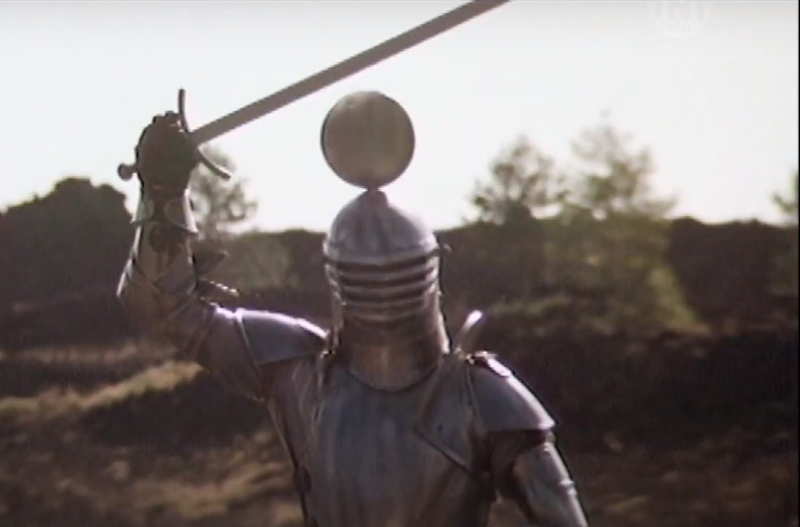
A still from the film "Hearts and Armor" (1983), based on the poem "Renaud de Montauban". Well, what can I say? A fairy tale is a fairy tale...
Good fellows lesson.
A. S. Pushkin "The Tale of the Golden Cockerel"
Documents stories. I already wrote that the Middle Ages was by no means a time of solid fanatics with burning eyes, smelly knights and peasants, without exception, illiterate and ignorant, although, we note, all this also happened. However, there were enough fools and ignoramuses at all times. Even now, in the age of the Internet, they have not died out, let alone those distant times. Nevertheless, there were already books and people who read them.
Moreover, these were not only church books, but also secular ones. In particular, in the Middle Ages, chivalric verse novels were very popular, among which the poem "Renaud de Montaban" was extremely popular. In fact, this is a real fairy tale for adults. But it told about affairs that were close and understandable to the then seniors, and therefore it was perceived accordingly.
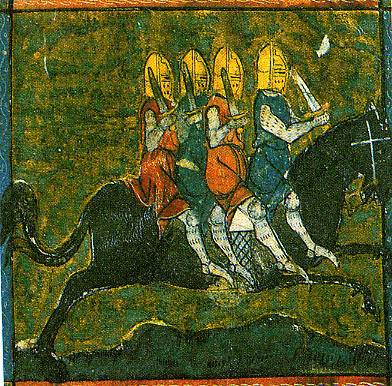
Miniature depicting Bayard's horse and four brothers riding on it from a XNUMXth-century Parisian manuscript. French National Library, Paris
For us, this work is of interest as an example of poetic medieval literature, but even more, in my opinion, "Reno ..." is valuable for its illustrations.
The fact is that, for example, the illustrations for most of Froissart's Chronicles were made at the end of the 1462th century, that is, what we see on them does not correspond to the time of the Hundred Years War described in them. But the illustrations that adorn the text of this poem correspond just to this time. They were made in 1470-XNUMX, and on them we see both people and their robes dating back to this time. Therein lies their value.
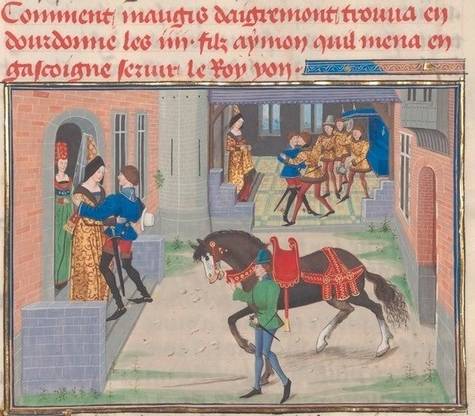
The heroes of the poem say goodbye to their beloved. Illustration by Loiset Llede for the poem "Renaud de Montauban", 1467-1469 Arsenal Library, Paris
Well, we will also get acquainted with the content of the poem itself.
So, who is this Renault de Montauban and why was he so popular and famous in his time?
The Italians called him Rinaldo di Montalbano, and in Holland - Reinout van Montalban or Montalbaen. And he was a legendary hero and knight, known since the XII century. It was then that the poem "The Four Sons of Aemon" was written, which told about the four sons of the Duke of Aemon - Renault, Richard, Alar and Guiscard, as well as their cousin - Mogis.
As it should be in a fairy tale, Reno has a magical horse Bayard and a sword Flamberg (Italian: Fusberta or Frusberta). Of course, he could not gain complete omnipotence, but both the horse and the sword greatly facilitated his existence and helped him more than once.
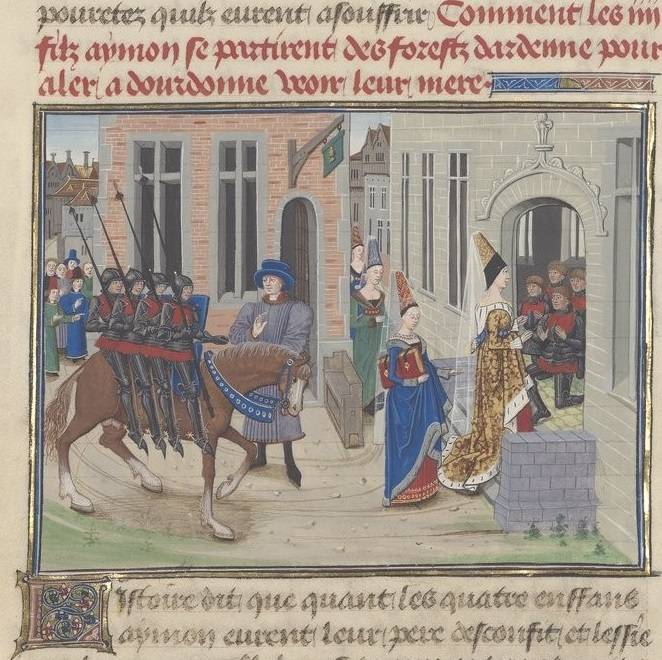
Four brothers on horseback Bayard arrive in the city of Dordonne. Illustration by Loiset Llede from the Renaud de Montauban manuscript, 1467-1469. Arsenal Library, Paris
The tale was translated into Dutch, German, Italian and English, it inspired even the Jarls of the Old Icelandic sagas and, of course, served as an incentive for subsequent sequels. Subsequently, Renault became an important character in the Italian Renaissance epic, including such works as Luigi Pulci's Morgante, Matteo Maria Boiardo's Orlando Innamorato, and Ludovico Ariosto's Orlando Furioso.
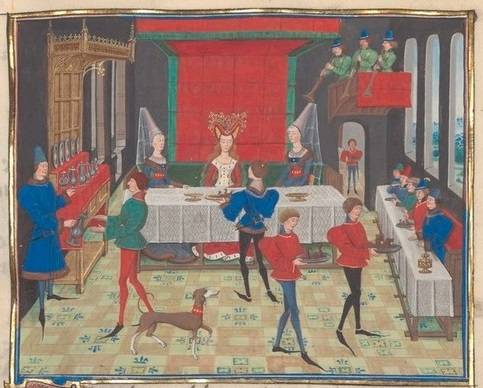
The scene of the feast allows us to examine in detail the costumes of that time ... Illustration by Loise Llede from the manuscript "Renaud de Montaban", 1467-1469. Arsenal Library, Paris
The oldest surviving version of the anonymous Old French poem about the four sons of Aemon dates from the late 18th century and includes 489 Alexandrian (12-compound) verses. This is one of the longest such poems.
Other versions range in size from 14 to 300 verses. Then it was transformed into prose novels of the 28th and 000th centuries, as a result, judging by the number of editions, it turns out that it was The Four Brothers that was the most popular chivalric romance in France at the end of the XNUMXth and the first half of the XNUMXth century.
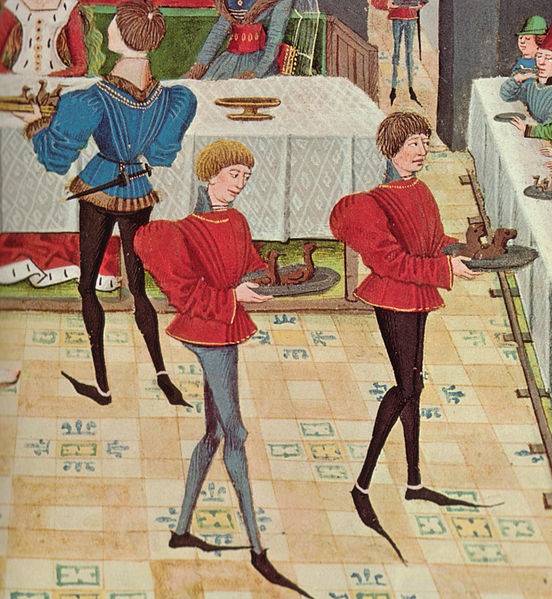
Fragment of the previous illustration. The pages are dressed in accordance with the canon of Burgundy fashions: purpuens with padded shoulders and tight legged choises.
Well, the plot of the tale is as follows: Renault and his three brothers are the sons of Duke Aemon de Dordonne. They flee Charlemagne's court after Renault kills one of Charlemagne's nephews in a fight. The war begins, but then the advisers of Charlemagne manage to convince him to forgive the brothers and resolve the matter peacefully.
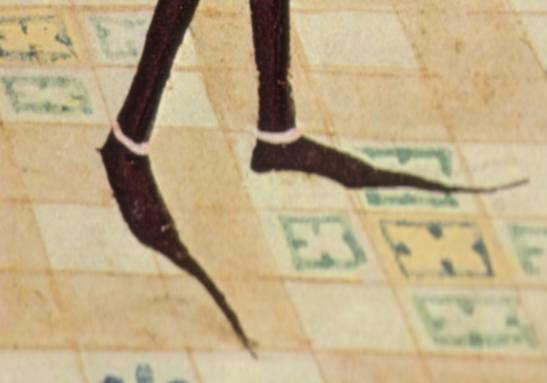
And those are their pointy shoes!
As a result, the four brothers are pardoned on the condition that Reno goes to the Holy Land on a crusade, and their magic horse Bayard, which could grow in size to carry all four brothers on his back, will be transferred to Charlemagne. Charlemagne decides to drown the magic horse, chaining it to a stone and throwing it into the river, but he manages to escape, after which he begins to live in the forest.
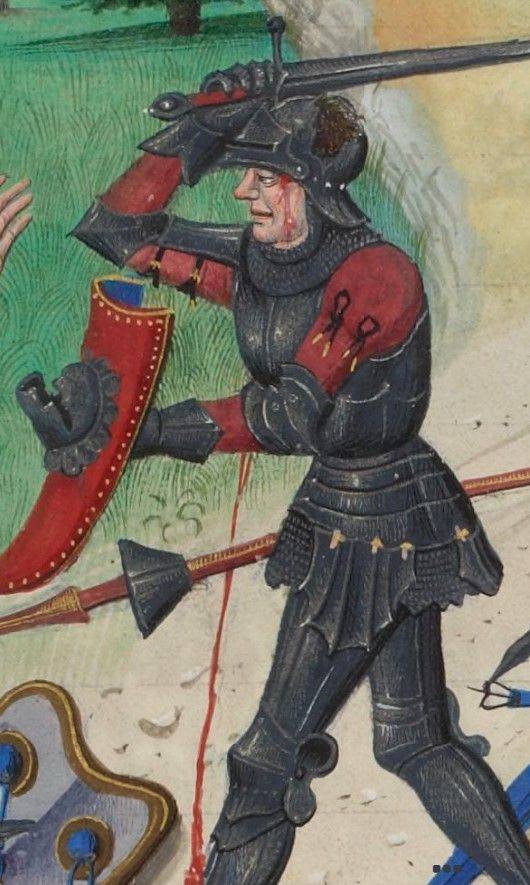
Gothic armor and details of clothing are very well depicted, connected by ties of cords with metal tips. The umbone of the shield is clearly cut. The spear behind the warrior is already equipped with a protective guard in the form of a "funnel". The helmet on the head of this knight is also damaged, but the head, most likely, was not seriously injured. Interestingly, his armor shows us armor of the old type, with chain mail aventail and chain mail skirt, on top of which typical Gothic shields-tassets are visible.
Reno participates in the crusades, but eventually returns to his home. But ... only to go to Cologne, where, under his care, the construction of St. Peter's Cathedral begins. He did not please the builders and they throw him into the river.
But Reno is not destined to drown, and his body miraculously returns in a cart to his brothers. He then ends up in Dortmund, where he becomes the patron of the new church and is identified with Saint Reinold.
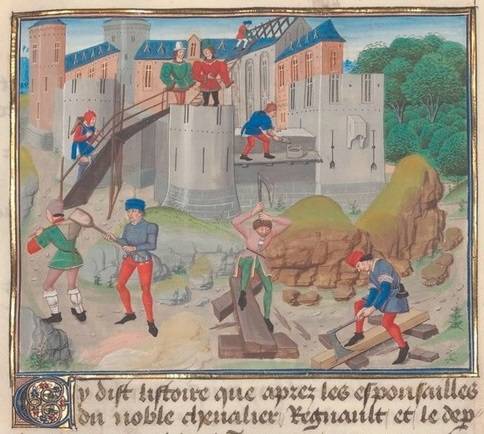
Cathedral construction. Bricklayers carry mortar in special shoulder buckets for lime. Well, carpenters cut beams for the roof, floors and ceilings
Interestingly, in all these stories, Charlemagne is depicted as a real vengeful and insidious tyrant. Moreover, he is easily deceived by the sorcerer Moghri.
Moreover, all the narrator's sympathies are not on the side of the all-powerful, in fact, Charles, but on the side of the persecuted four brothers. Although he does not encroach on the principles of feudal suzerainty.
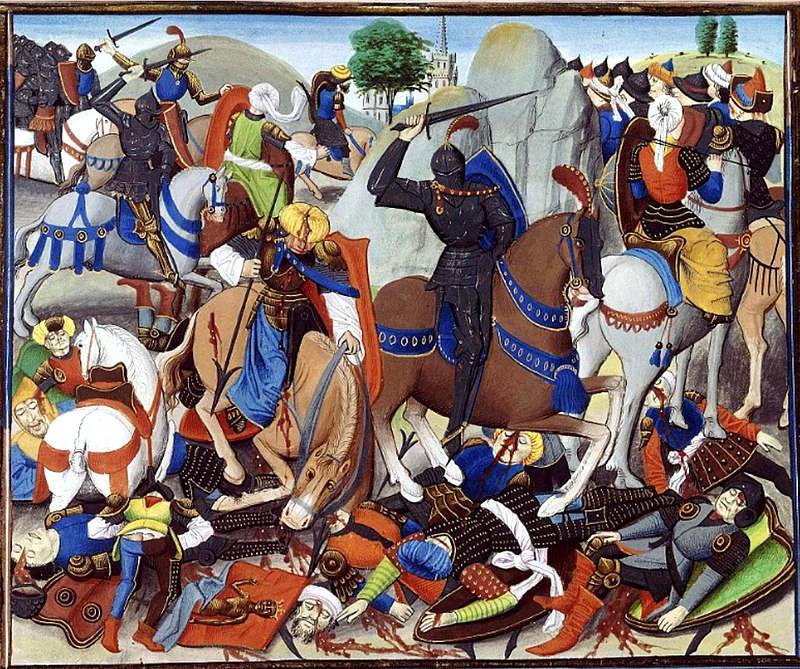
Mogis on his horse Bayard fights the infidels in Renaud de Montauban. Illustration by Loiset Liede, Bruges, 1462–1470
Mogis eventually gives Bayard and Fromberg to his cousin Reno.
According to one version, he becomes a hermit and dies in a cave. On the other - a senator in Rome. So the reader could choose the end of this story to his liking.
In general, to retell all the ups and downs and adventures of all these brothers and fathers would be an extremely difficult task. It's like retelling the world of Dune or Star Wars with all its sequels and prequels.
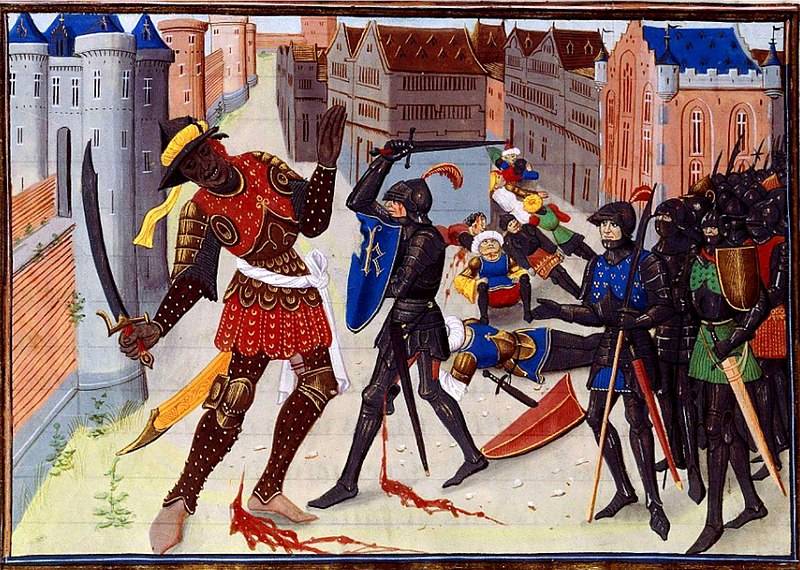
Mogis fights the Saracen wizard Noiron at Egremont, in Renaud de Montauban. Painter David Aubert, Bruges, 1462-1470 Interestingly, most of the armor in the illustrations of "Renaud de Montaban", equipped with a double cuirass (two parts, upper and lower) have its upper part either covered with bright fabric, or it is a brigandine at all, only reinforced with solid forged armor at the level of the abdomen. And this is hardly an illustrator's fantasy. Most likely, he saw warriors equipped in this way.
The most important thing here is that all the books of the cycle were rewritten many times and illustrated by a number of artists. Moreover, they were illustrated masterfully, which allows us today to visualize the clothing and military equipment of people in the last third of the XNUMXth century in the most vivid way.
Interestingly, based on the cycle in 1983, a feature film "Hearts and Armor" was shot in Italy. That's just the armor in it, well, absolutely fantastic, and even they have nothing to do with the Crusades. However, a fairy tale is a fairy tale...
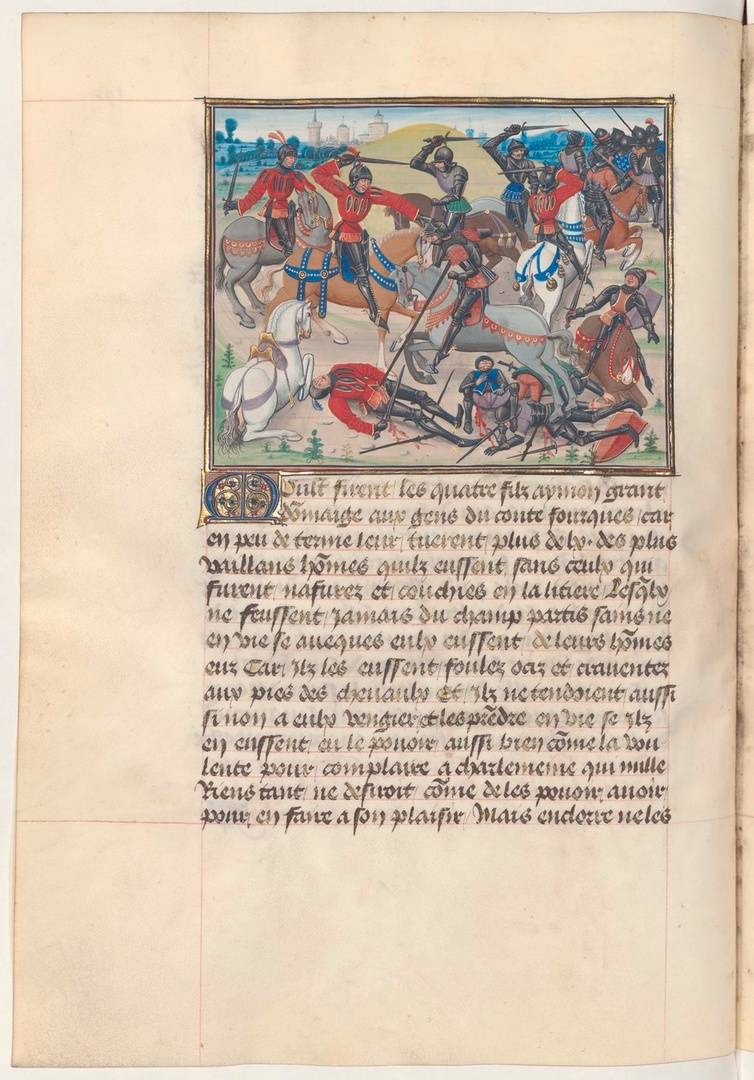
This is how the page from the manuscript with the illustration looks like
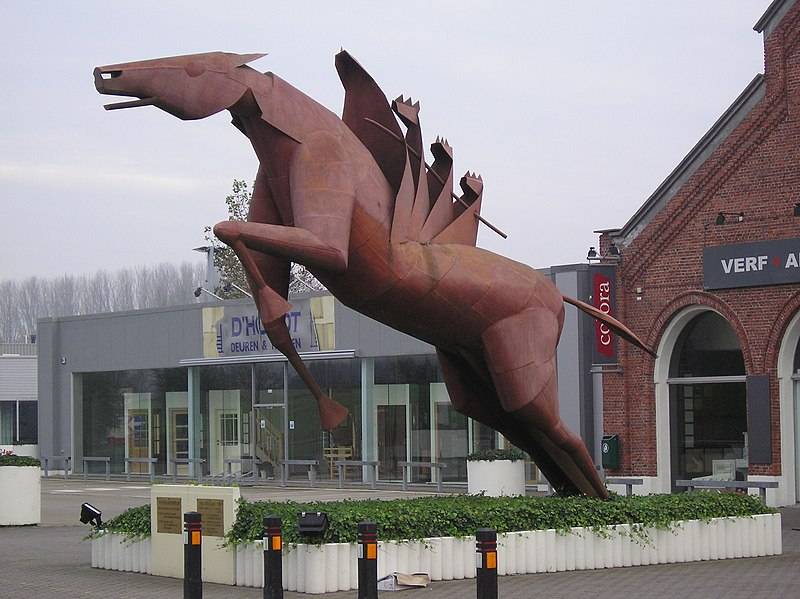
But this is also ... art! Apparently, the story of an elongated horse and four brothers seriously struck the imagination of a modern artist, who sculpted them like this for the Belgian city of Grembergen! Photo by V. S. Volkov
Information